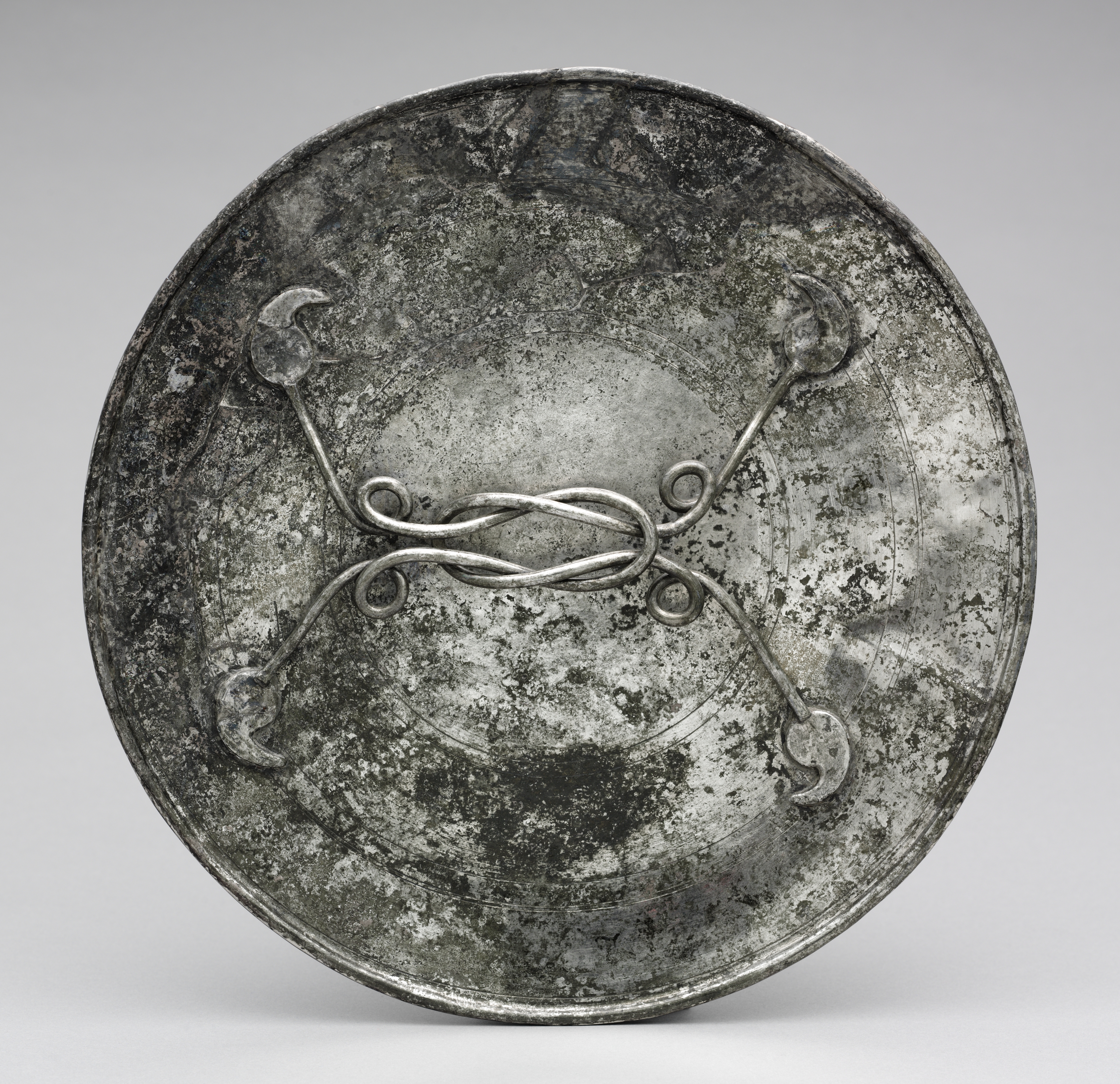The Cleveland Museum of Art
Collection Online as of April 26, 2024

Mirror with a Handle in the Form of a Herakles Knot
c. 280–400 CE
Diameter: 2.3 x 34.6 cm (7/8 x 13 5/8 in.)
Location: 104 Late Antiquity
Description
This type of mirror was introduced throughout the Roman Empire by the 2nd century and remained popular into the 3rd and 4th centuries. Similar examples have been found in Germany and Britain. The handle is made of two thick pieces of silver wire, intertwined to form a Herakles knot--a knot so complex that only someone as strong as Herakles could break it. In antiquity, knots of various kinds were believed to provide protection from harm.- reportedly found on the coast of Syria south of Latakia, from a treasure of eleven pieces. (Milton Girod, Sarthe, France).
- Maguire, Eunice Dauterman, Henry Maguire, and Maggie J. Duncan-Flowers. Art and Holy Powers in the Early Christian House. Urbana: Krannert Art Museum, University of Illinois at Urbana-Champaign, 1989. p. 194.Lerner, Judith. "Horizontal-Handled Mirrors: East and West." Metropolitan Museum Journal, Volume 31(The Metropolitan Museum of Art, 1996). pp. 11-40.The Cleveland Museum of Art. The Cleveland Museum of Art Handbook. Cleveland, OH: The Cleveland Museum of Art, 1958. Mentioned and Reproduced: cat. no. 47 archive.org
- {{cite web|title=Mirror with a Handle in the Form of a Herakles Knot|url=false|author=|year=c. 280–400 CE|access-date=26 April 2024|publisher=Cleveland Museum of Art}}
Source URL:
https://www.clevelandart.org/art/1956.31